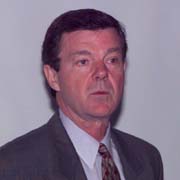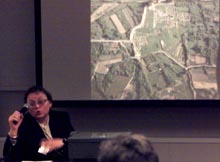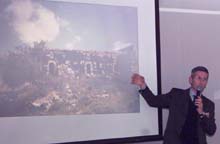 |
April 26 - 30 1999, Washington DC |

|
Photo and RealAudio highlights for 26 April
| Dennis Mahar, Manager, Environment and Natural Resources Group, World Bank Institute, explained WBI’s involvement in training and capacity building, highlighting its consultation with local populations on projects. He noted that WBI is just beginning work in the area of Cultural Site Mangement (CSM), and thus the Workshop’s findings will be extremely valuable in guiding its future work. | |
|
Gloria
Davis, Director, Social Development Family, Environmentally and Socially
Sustainable Development (ESSD), World Bank, discussed the Bank’s efforts
to examine the impact of its policies on people and society, as well
as the impact of people and society on development projects. She observed
that when the Bank began work on culture and development, it focused
on heritage in general, but the concept is being continuously refined
to incorporate the role culture plays in development.
|
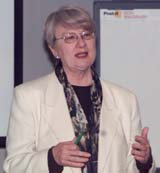 |
| Zoraida Demori-Stanicic, Conservation Department, Ministry of Culture, Croatia, made a presentation on the Salona archaeological site, the largest site on the Croatian coast. She outlined a plan to protect the site’s archaeological and cultural heritage, present the site more effectively and improve information for tourist and educational purposes. She stressed the importance of establishing a bond between the archaeological site and the local community. | |
|
Nicholas Stanley-Price, Professor, University College, London, emphasized that there are values beyond a cultural heritage site’s historical significance to consider when formulating plans for its preservation. He noted a divergence in the past between natural and cultural heritage, often due to different government ministries being responsible for each. |
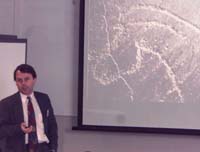 |
| Giovanni Boccardi, UNESCO Program Specialist for Culture, made a presentation on the Baptism Site on the eastern bank of the Jordan River, where remains of a monastery, church and ancient hermits’ caves were identified. Plans are now being prepared to develop the site for tourists. The site now exists in a pristine natural environment but will be visited by millions of pilgrims, and the challenge is how to develop the site without altering its character. | |
|
Arlene Fleming, Cultural Resource Specialist, World Bank, outlined the objectives of the Workshop, which are to: identify issues, challenges and problems associated with CSM; ascertain strategies for CSM; identify strategy implications for specific Bank-financed projects with CSM components; formulate an action plan for each CSM component of a Bank-financed project; and a draft a curriculum outline for a CSM educational program to be made available world-wide. |
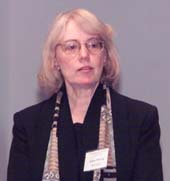 |
| Participants introducing each other during the opening session of the workshop. | |
|
Kreszentia
(Tia) Duer, Leader, Culture and Sustainable Development Program, Special
Programs/ESSD, World Bank, said that the Bank’s comparative advantage
is its experience in large-scale, complex development programs as well
as its access to government ministers and other high-level decision
makers. She noted that the Bank’s program will be at the cutting edge
of the development process and that its aim is to establish ongoing
participation and communication between relevant groups and individuals.
|
 |
©
1999, SD / Earth Negotiations Bulletin. All
rights reserved.
